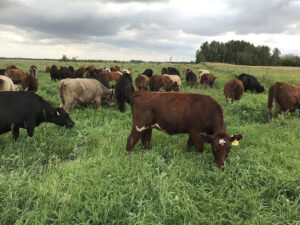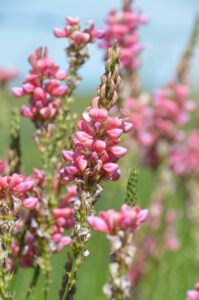New Webpage: Forage Species

Forages are a major feed component for the cow-calf and backgrounding sectors of the beef industry, and are made up of grasses, legumes, forbs and shrubs. Eighty percent of a beef animal’s diet over its lifetime comes from forages.
Climate, local soil conditions and management objectives determine the best forage species and variety for each planting area and application. Forage crops add to the diversity and beauty of landscapes, provide habitat for wildlife, can play a role in soil improvement and water conservation, reduce erosion, and contribute to the carbon cycle as a carbon sink.
Most cultivated grasses grown in Canada, referred to as tame species, are introduced species from Europe or Asia that have been bred and adapted to perform in Canadian conditions. The unique characteristics that various species have will provide an advantage over other species under different growing conditions. Some grasses have superior adaptation to soil and climate conditions such as heat, drought, flooding, cold, salinity and acidity. The fibrous root systems of grasses stabilize soil and reduce erosion.

Common grasses used in beef cattle production in Canada include timothy, tall fescue, smooth and meadow bromegrass, orchard grass, Kentucky bluegrass, ryegrass, crested wheatgrass and reed canary grass. Timothy grass is the most common species of grass cultivated for forage throughout eastern Canada. Highly palatable, it is often seeded with a mixture of other types of grasses and legume forages for improved yield performance. In western Canada, wheatgrasses and bromegrasses are commonly used due to their greater drought tolerance. To increase yield, flexibility and economic returns, producers may also use annual cereal crops, including barley, oats, wheat, triticale, millet, sorghum and corn, as forage for grazing, cutting and baling as greenfeed, and extended grazing.
Many factors must be considered when making a forage selection. Stand mixtures should be appropriate for the soil, acclimatized to the region, and be able to withstand management intentions and pressures (i.e., haying/grazing). When matching forage species to the characteristics of the soil, consider drainage, fertility, and pH. Soil maps and information that describe the limitations of a particular soil type are helpful, especially for land that has not been previously managed.
The newly released interactive Forage Species Selection Tool (Forage U-Pick) for Western Canada is available to assist land managers in selecting the correct forage species best suited to their climate, soil conditions and management goals. Detailed species information, including longevity, use, yield, nutritional quality, tolerance, and hardiness, are included as well as pictures at various stages of growth. Seeding rate and seed cost calculators plus information about weeds are integrated within the tool as well.
Visit the new Forage Species Page for more information including mixtures vs pure stands, management considerations, and an overview of Canadian forage breeding programs.
Click here to subscribe to the BCRC Blog and receive email notifications when new content is posted.
The sharing or reprinting of BCRC Blog articles is welcome and encouraged. Please provide acknowledgement to the Beef Cattle Research Council, list the website address, www.BeefResearch.ca, and let us know you chose to share the article by emailing us at [email protected].
We welcome your questions, comments and suggestions. Contact us directly or generate public discussion by posting your thoughts below.